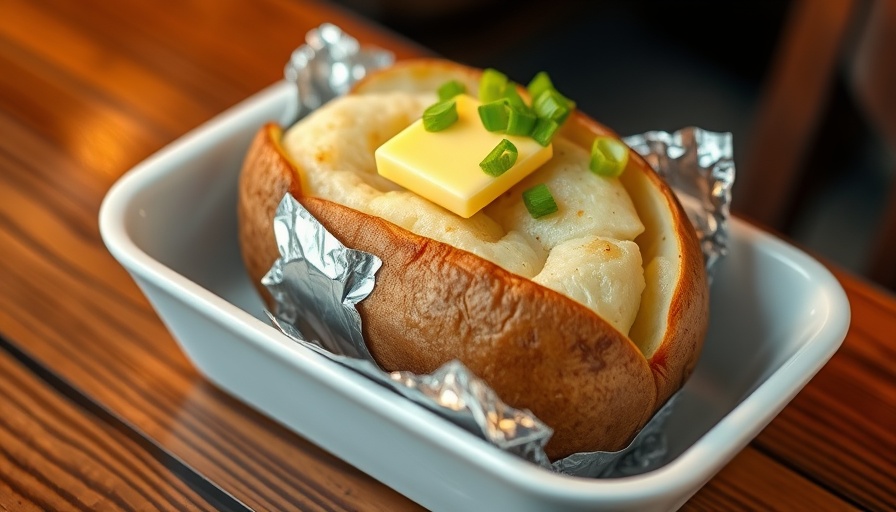
Why Foil Is Fooling Your Potatoes
For many home cooks, wrapping a potato in foil before baking is as habitual as preheating the oven. It may feel nostalgic, evoking memories of family dinners and cozy kitchens. But what if I told you that this common practice is sabotaging one of the simplest pleasures of cooking? You're not alone if you believe foil helps your potato cook faster or more evenly; it's a long-held myth. In fact, foil traps moisture, resulting in a steamed potato instead of that delectable crispy skin we all crave.
Transforming Touch with Texture Magic
Instead of tucking your potato away in aluminum, embrace the natural process of roasting. Start with a thorough cleaning and a good scrub to remove any dirt. Poking a few holes with a fork allows steam to escape, reducing the risk of an exploding spud. A rub of oil and a sprinkle of coarse salt are optional but encourage that coveted crispy layer on the skin. Baking your potato directly on the oven rack or a baking sheet allows it to bask in dry heat, crisping up beautifully while the inside transforms into the fluffy delight we all enjoy.
The Science Behind a Perfect Baked Potato
What makes this method work so effectively? The beauty lies in airflow and evaporation. Keeping the skin exposed to dry heat dehydrates it, creating that appealing crackly crust. As the starches inside break down, they fluff up, producing a tender interior that you'll want to dig into immediately. It’s as simple as letting nature work its magic; your patience ultimately rewards you with a potato that has both texture and flavor.
Storing Potatoes: How to Keep the Heat
If your culinary endeavors involve meal prepping or serving a gathering, you can still use foil — just not while baking. Wrapping your baked potatoes in foil post-cooking aids in heat retention without compromising that crispy skin you worked hard to create. This way, you can serve hot baked potatoes sans the sogginess that foiling before baking creates. It's a clever hack, perfect for keeping your culinary creations warm until they’re time to shine at the table.
Your New Baked Potato Strategy
As you prepare your next meal, resist the urge to reach for the foil. Think of your potato’s journey through the oven as a quest for excellence. Allow it to breathe and roast freely, ensuring that the humble potato transforms into a side dish worthy of its place on the plate next to any main course. The next time you bake, remember that sometimes, less really is more.
Kitchen Wisdom for Every Cook
Incorporating this new baking technique into your kitchen routine not only elevates your potato experience but could also enhance other baking ventures. Whether it's using Chowhound recipes or exploring meal prep techniques, look for ways to apply this knowledge to other starchy vegetables, like sweet potatoes or even squash. Your enjoyment and skill set will flourish with this bold approach — happy baking!
 Add Row
Add Row  Add
Add 



Write A Comment